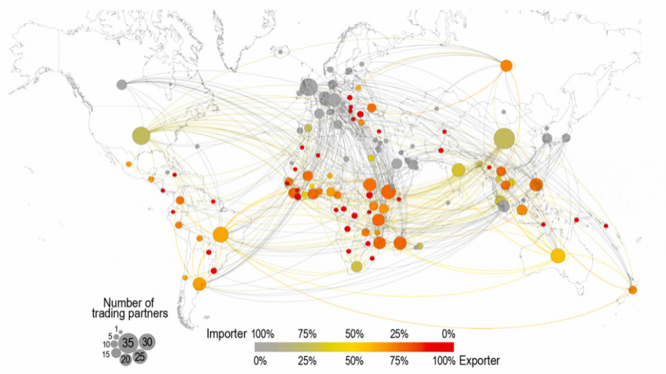“Unlike plagues of the dark ages or contemporary diseases we do not understand, the modern plague of overpopulation is soluble by means we have discovered and with resources we possess.”
Martin Luther King Jr.
Sustaining the needs of a global population that has tripled in the last century alone is one of the major challenges of modern man. The global population has increased by 45% to 7 billion since the dawn of the new millennium, and is expected to hit at least 9.7 billion by 2050. Over half of this growth is expected to come from Africa, where the population will double to 2.5 billion by 2050. India will surpass China as the world’s most populous country by 2022, six years earlier than was previously calculated. By 2100, the human population will have surpassed 11.2 billion.
The growth of an extra billion people every 12 years, or 220,000 people every single day, represents an unprecedented demand for the world’s natural resources; one that comes at a considerable ecological cost for our planet. Our most basic and essential resources, those listed as fundamental in Abraham Maslow’s Hierarchy of Needs, are being put to the test.
Food
The Food and Agricultural Organization (FAO) estimates one billion people on our planet go to bed hungry every single night. This hunger kills more people each year than AIDS, Malaria and Tuberculosis combined. 780 out of the 795 million people affected live in Africa and Asia – the regions that also expect to see the most growth over the next century. The good news is that we have begun to address the situation; the total number of malnourished people on the planet is down 167 million over the past decade and 216 million less than in 1990.
Water
Water use has been growing at more than twice the rate of population increase over the last century. By 2025, 1.8 billion people will be living in countries or regions with absolute water scarcity, while two-thirds of the global population will be experiencing stress conditions. A third of the world’s 37 largest aquifers, responsible for supporting two billion people on our planet, are now being drained faster than they are being replenished each year.
Energy
The continued burning of fossil fuels for 85% of the energy that powers the Earth spews 90 million tons of carbon dioxide (CO2) into our atmosphere every 24 hours. As our population and our needs for energy rise, we will continue to exploit even more dangerous sources of energy
In an attempt to secure sustenance for our growing populations, the world’s superpowers, corporations and investors purchase vast amounts of agricultural land in foreign and developing regions. A 2014 study by in Environmental Research Letters found that at least 126 countries are now involved in the purchase and sale of global farmland. The World Bank estimates that 37% of this newly acquired land is used to grow food crops, 21% is for the production of cash crops and 21% is used to grow biofuels. China, with one-fifth of the world’s population but only 8% of its farmland, is a relentless purchaser of global agricultural land. Ranked as the most active country in the trade, China has purchased acreage from 33 foreign countries and sold to three. The US is a close second, buying agricultural land from 28 countries and selling to three, while the United Kingdom owns agricultural land in 30 foreign countries.
Global Agricultural Land Trade
J W Seaquist. Architecture of the Global Land Acquisition System (2014)
In a world facing rapid population growth, a changing climate and the depletion of vital resources, long-term economic growth depends on finding a sustainable way to meet society’s increasing demands. All the while reducing our impact on the natural world and its ability to carry out the processes we rely on. Investing in global agriculture is a promising option, one that can increase agricultural productivity in developing regions worldwide. Distilled to its base elements, the aim for governments, corporations and investors in this new world should be the same as it is for individuals – survival. There is a primal need for new and sustainable solutions to the world’s most pressing issues; solutions that will enable us to survive and to thrive. Now is the time to focus our efforts.
